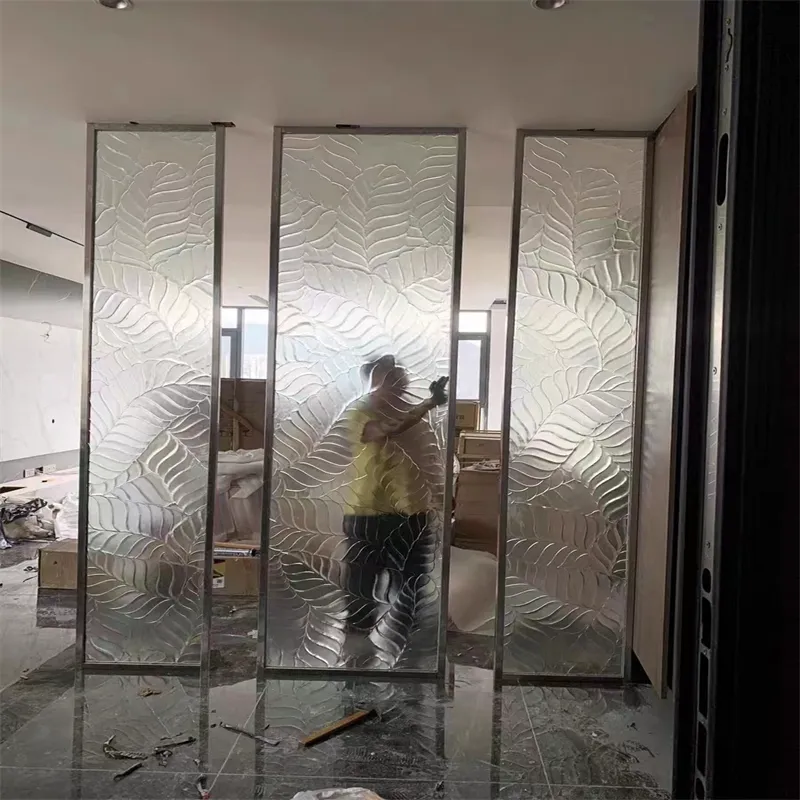Jan . 26, 2025 03:31 Back to list
Bent/Curved Glass
Laminated glass has become an indispensable material in many industries due to its robustness and versatility. This type of glass is manufactured by sandwiching a layer of polyvinyl butyral (PVB) or other interlayer materials between two or more pieces of glass. When subjected to impact, the glass may crack but the shards adhere to the interlayer, minimizing injury risks and maintaining some structural integrity. Let’s explore the various types of laminated glass, each serving unique purposes and bringing specific benefits to the table.
4. Decorative Laminated Glass Merging functionality with aesthetics, this type allows for various artistic expressions. The interlayer can be embedded with colors, patterns, or textures, making it a popular choice in architectural design for both interiors and exteriors. Decorative laminated glass maintains all the safety features of standard laminated glass while adding a distinct design element to any space. It's a favored option for retail environments, office partitions, and modern residential uses where visual appeal is as critical as functionality. 5. Colored Laminated Glass By incorporating tinted interlayers or glass sheets, this variant offers enhanced solar control along with aesthetic benefits. It's widely used in buildings to reduce glare, manage heat intake, and contribute to energy efficiency. Colored laminated glass allows architects and designers to play with light and color, creating vibrant environments while ensuring occupants remain cool and comfortable. 6. Smart Laminated Glass A cutting-edge development in the glass industry, smart laminated glass includes technologies that enable it to transition between transparent and opaque states. With electronic control, often through smartphone apps, this glass type enhances privacy on demand, serving dual purposes in both residential and commercial spaces. It combines the benefits of all prior types, adding a layer of innovation with its adjustable transparency which is highly valued in high-tech office environments and luxury residences. Laminated glass types cater to a broad spectrum of needs from everyday residential use to sophisticated architectural designs and high-security settings. Each type, while maintaining core characteristics of safety and durability, offers unique enhancements that make it suitable for specific applications. Selecting the appropriate laminated glass depends heavily on the specific requirements of a project, whether that's maximizing safety, reducing noise, or adding a decorative edge. Through continuous advancements in technology, laminated glass continues to prove its indispensable role in modern architecture and design, providing trustworthy solutions to meet both ordinary and extraordinary demands.


4. Decorative Laminated Glass Merging functionality with aesthetics, this type allows for various artistic expressions. The interlayer can be embedded with colors, patterns, or textures, making it a popular choice in architectural design for both interiors and exteriors. Decorative laminated glass maintains all the safety features of standard laminated glass while adding a distinct design element to any space. It's a favored option for retail environments, office partitions, and modern residential uses where visual appeal is as critical as functionality. 5. Colored Laminated Glass By incorporating tinted interlayers or glass sheets, this variant offers enhanced solar control along with aesthetic benefits. It's widely used in buildings to reduce glare, manage heat intake, and contribute to energy efficiency. Colored laminated glass allows architects and designers to play with light and color, creating vibrant environments while ensuring occupants remain cool and comfortable. 6. Smart Laminated Glass A cutting-edge development in the glass industry, smart laminated glass includes technologies that enable it to transition between transparent and opaque states. With electronic control, often through smartphone apps, this glass type enhances privacy on demand, serving dual purposes in both residential and commercial spaces. It combines the benefits of all prior types, adding a layer of innovation with its adjustable transparency which is highly valued in high-tech office environments and luxury residences. Laminated glass types cater to a broad spectrum of needs from everyday residential use to sophisticated architectural designs and high-security settings. Each type, while maintaining core characteristics of safety and durability, offers unique enhancements that make it suitable for specific applications. Selecting the appropriate laminated glass depends heavily on the specific requirements of a project, whether that's maximizing safety, reducing noise, or adding a decorative edge. Through continuous advancements in technology, laminated glass continues to prove its indispensable role in modern architecture and design, providing trustworthy solutions to meet both ordinary and extraordinary demands.
Next:
Latest news
-
Safety and Style with Premium Laminated Glass Solutions
NewsJun.24,2025
-
Reinvents Security with Premium Wired Glass
NewsJun.24,2025
-
Premium Float Glass Line for Modern Architecture
NewsJun.24,2025
-
Low Emissivity Glass for Energy-Efficient Architecture
NewsJun.24,2025
-
High-Performance Insulated Glass Solutions for Modern Architecture
NewsJun.24,2025
-
Elevates Interior Style with Premium Silver Mirror
NewsJun.24,2025
Related PRODUCTS














